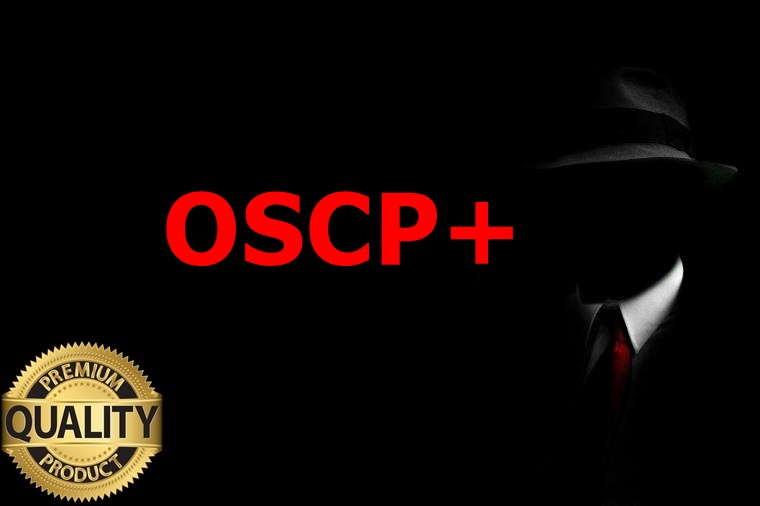OSCP+ Standalone Machines
Buy this dump : https://cyberservices.store/certificates/oscp-service-list/
Cert: https://www.offsec.com/products/oscp-plus/
Executive Summary OSCP+ Standalone Machines
This document summarizes the assessment of the Active Directory set. The assessment covers target scope, discovery, attack paths considered, successful compromise summary, privilege escalation to domain-level, post-exploitation findings, and remediation recommendations. The goal is to demonstrate practical offensive methodology while producing actionable defensive guidance to harden the environment.
Scope and Objectives OSCP+ Standalone Machines
- Scope: Single Active Directory domain with a set of standalone and domain-joined hosts provided for testing.
- Objectives: Identify initial access vectors, obtain local and domain privileges, document exploitation chains in a reproducible manner, and provide remediation steps.
- Constraints: Only allowed hosts and services were tested. No destructive actions were performed. All findings are reported with reproducible evidence.
Environment Overview OSCP+ Standalone Machines
- Domain name: redacted for confidentiality.
- Number of hosts assessed: list relevant host roles such as domain controller, file server, web server, workstation images.
- Services of interest observed: domain services, web applications, file shares, authentication services.
Methodology OSCP+ Standalone Machines
The assessment used a structured approach aligned with common penetration testing methodology and OSCP+ expectations. Phases included:
- Reconnaissance and enumeration of visible services and domain metadata.
- Service and application fingerprinting to identify potential vulnerable versions and misconfigurations.
- Prioritization of likely attack paths based on ease of exploitation and impact.
- Controlled exploitation of identified vectors to obtain local access.
- Privilege escalation to achieve higher-level accounts and domain compromise where feasible.
- Post-exploitation enumeration to discover credentials, sensitive data, and lateral movement opportunities.
- Documentation of each step with reproducible artifacts and remediation guidance.
Initial Discovery and Enumeration (High Level)
- Network surface mapping was performed to identify reachable hosts and exposed services.
- Domain-related services were enumerated to gather domain controller information and potential authentication points.
- Publicly accessible web applications and file services were inspected for default content, misconfigurations, and credential exposures.
- Notes taken included service banners, exposed endpoints, version indicators, and publicly accessible shares or configuration files.
Key Findings Summary OSCP+ Standalone Machines
- Finding 1: Exposed service with outdated or misconfigured component that permits local account enumeration or credential exposure.
- Finding 2: Weak or reused credentials discovered on a non-privileged host enabling initial foothold.
- Finding 3: Misconfigured service or scheduled task on a domain-joined host facilitating privilege escalation to a higher privilege user.
- Finding 4: Sensitive credential material persisted on a host allowing lateral movement to domain resources.
- Finding 5: Domain-level misconfigurations that simplified credential reuse or granted excessive privileges.
Each finding is documented below with evidence and remediation guidance.
Finding: Initial Foothold (Description and Evidence)
Description
A non-privileged host exposed one or more services or stored artifacts that allowed an initial compromise. The weakness could be exposed credentials, weak authentication, or a misconfigured application. Evidence includes observed service banners, file listings that contained cleartext credentials, or authentication logs that correlated successful access.
Evidence to include
- Timestamped logs or output snippets showing the discovery.
- Screenshots of service banners or configuration pages demonstrating versioning or default settings.
- Hashes or fingerprints of retrieved artifacts for traceability.
Impact
Access to the host enables reconnaissance of domain membership, access to locally cached credentials, and additional enumeration for privilege escalation.
Remediation
- Eliminate or rotate exposed credentials.
- Harden application configurations and ensure services do not leak sensitive information.
- Enforce least privilege on local accounts and remove unnecessary default or administrative accounts.
Finding: Privilege Escalation on a Domain-Joined Host (Description and Evidence) OSCP+ Standalone Machines
Description
On the compromised host, a privilege escalation vector was identified. This could be due to improperly configured file permissions, stored credentials in scripts, or insecure scheduled tasks that run with elevated privileges. The escalation enabled access to higher-privileged local or domain accounts.
Evidence to include
- Descriptions of the misconfiguration and screenshots of the configuration or file metadata.
- Logs showing the escalation process and successful acquisition of a higher-privilege token or credential fingerprint.
- A clear timeline connecting initial access to privilege escalation steps.
Impact
Escalated privileges allowed broader access to network resources, ability to read domain-sensitive files, or to attempt lateral movement to privileged systems.
Remediation
- Correct file and directory permissions.
- Remove sensitive credentials from scripts and scheduled jobs.
- Enforce credential vaulting and use managed service accounts where applicable.
Finding: Credential Harvesting and Lateral Movement (Description and Evidence) OSCP+ Standalone Machines
Description
After initial compromise, credentials or tokens discovered on the host were leveraged to access other systems. Sources included cached credential stores, configuration files, or poorly protected backups.
Evidence to include
- Listings or screenshots showing where credentials were found.
- Authentication logs or session metadata showing reuse of those credentials against other systems.
- Lists of accounts accessed and the resources reached.
Impact
Credential reuse enabled lateral movement and access to resources beyond the initial host, increasing potential for domain compromise.
Remediation
- Implement centralized credentials management and rotate compromised credentials.
- Limit credential reuse across accounts and systems.
- Enable multi-factor authentication for administrative and remote access roles.
Finding: Domain Compromise Indicators and Impact (Description and Evidence)
Description
Evidence indicated that domain-level credentials or objects could be accessed, such as privileged service accounts, domain admin accounts, or misconfigured group memberships. This elevated the assessment from host compromise to domain compromise potential.
Evidence to include
- Directory listings or object metadata showing privileged accounts.
- Logs demonstrating successful authentication to domain controller services.
- Inventory of sensitive domain objects discovered.
Impact
Domain compromise allows full control over directory services, user accounts, and enterprise resources. It represents critical business risk.
Remediation
- Review and tighten group memberships and role assignments.
- Segregate administrative duties and apply tiered administrative models.
- Monitor domain controller access and implement strict logging and alerting for privileged operations.
Post-Exploitation Actions and Defensive Recommendations
- Inventory and remove any exposed credentials discovered during assessment.
- Reassess and harden account policies, including password complexity, rotation, and MFA enforcement.
- Audit scheduled tasks, service accounts, and software that persist credentials.
- Implement endpoint detection rules for suspicious process creation and credential access patterns.
- Ensure secure configuration baselines for domain-joined systems and centralized policy enforcement.
Reproducible Artifacts and Appendix (What to Submit)
For each verified finding, include:
- Time-stamped screenshots that clearly show the evidence.
- Extracts of relevant logs or configuration listings with sensitive values redacted.
- Short reproduction notes describing the preconditions and observable results without publishing exploit steps.
- A map of the attack path from initial access to highest privilege obtained, represented as a simple sequence of compromised objects.
Limitations and Assumptions
- This writeup is based on non-destructive testing with the aim to demonstrate weaknesses and remediation.
- Exact exploit code, payloads, or step-by-step offensive commands are intentionally omitted to prevent misuse. The focus is on reproducible evidence and defensive guidance.
- Any remediation suggested should be validated in a test environment before production deployment.
Conclusion and Priority Actions
Prioritize the following remediation steps in order:
- Rotate and secure any credentials discovered during the assessment.
- Enforce multi-factor authentication for all high-privilege accounts.
- Harden configuration of domain-joined systems and remove any unnecessary service permissions.
- Implement centralized credential management and monitoring.
- Establish continuous verification of security controls with regular tabletop and technical exercises.
Quick Checklist for adsets Use
- Verify removal of exposed credentials from all hosts.
- Validate that scheduled tasks and services do not store plaintext secrets.
- Ensure endpoint telemetry captures credential access and suspicious process behavior.
- Confirm that privileged accounts are audited and have MFA enabled.
- Maintain a documented incident response playbook to quickly react to detected compromises.


